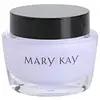What's inside
What's inside
 Key Ingredients
Key Ingredients

 Benefits
Benefits

 Concerns
Concerns

 Ingredients Side-by-side
Ingredients Side-by-side

Water
Skin ConditioningDimethicone
EmollientCyclopentasiloxane
EmollientGlycerin
HumectantPropylene Glycol
HumectantCyclohexasiloxane
EmollientBetaine
HumectantCamellia Sinensis Extract
AntioxidantAlgae Extract
EmollientTocopheryl Acetate
AntioxidantSodium PCA
HumectantProline
Skin ConditioningArginine
MaskingGlycine
BufferingAlanine
MaskingLysine
Skin ConditioningGlutamic Acid
HumectantSerine
MaskingThreonine
Sorbitol
HumectantButylene Glycol
HumectantHydrogenated Polyisobutene
EmollientGlyceryl Polyacrylate
C13-14 Isoparaffin
EmollientPolyacrylamide
PEG-12
HumectantCarbomer
Emulsion StabilisingLaureth-7
EmulsifyingDisodium EDTA
Benzophenone-4
UV AbsorberTriethanolamine
BufferingPhenoxyethanol
PreservativeMethylparaben
PreservativeDMDM Hydantoin
PreservativeCI 60725
Cosmetic ColorantCI 16035
Cosmetic ColorantWater, Dimethicone, Cyclopentasiloxane, Glycerin, Propylene Glycol, Cyclohexasiloxane, Betaine, Camellia Sinensis Extract, Algae Extract, Tocopheryl Acetate, Sodium PCA, Proline, Arginine, Glycine, Alanine, Lysine, Glutamic Acid, Serine, Threonine, Sorbitol, Butylene Glycol, Hydrogenated Polyisobutene, Glyceryl Polyacrylate, C13-14 Isoparaffin, Polyacrylamide, PEG-12, Carbomer, Laureth-7, Disodium EDTA, Benzophenone-4, Triethanolamine, Phenoxyethanol, Methylparaben, DMDM Hydantoin, CI 60725, CI 16035
Water
Skin ConditioningSqualane
EmollientGlycerin
HumectantPropanediol
SolventCaprylic/Capric Triglyceride
MaskingDimethicone
EmollientGlyceryl Stearate
EmollientPentylene Glycol
Skin ConditioningHydroxyacetophenone
AntioxidantHydroxyethyl Acrylate/Sodium Acryloyldimethyl Taurate Copolymer
Emulsion StabilisingHydrogenated Phosphatidylcholine
EmulsifyingArginine
MaskingAcrylates/C10-30 Alkyl Acrylate Crosspolymer
Emulsion StabilisingXanthan Gum
EmulsifyingBisabolol
MaskingDimethiconol
EmollientPolysorbate 60
EmulsifyingDisodium EDTA
Cyclodextrin
AbsorbentCaffeine
Skin ConditioningButylene Glycol
HumectantSorbitan Isostearate
EmulsifyingSodium Hyaluronate
HumectantHydrolyzed Sodium Hyaluronate
Skin ConditioningCarnosine
Skin ConditioningCitrus Sinensis Peel Extract
PerfumingHydrolyzed Algin
Collagen
MoisturisingSodium Acetylated Hyaluronate
HumectantPhenoxyethanol
PreservativeCitrus Limon Peel Oil
MaskingPelargonium Graveolens Flower Oil
MaskingCitrus Aurantium Bergamia Fruit Oil
MaskingZingiber Officinale Root Extract
MaskingPalmitoyl Tripeptide-5
Skin Conditioning1,2-Hexanediol
Skin ConditioningElettaria Cardamomum Seed Oil
MaskingAphanothece Sacrum Polysaccharide
AbsorbentPolianthes Tuberosa Extract
MaskingCananga Odorata Flower Oil
MaskingPalmitoyl Hexapeptide-12
Skin ConditioningSodium Hyaluronate Crosspolymer
HumectantWater, Squalane, Glycerin, Propanediol, Caprylic/Capric Triglyceride, Dimethicone, Glyceryl Stearate, Pentylene Glycol, Hydroxyacetophenone, Hydroxyethyl Acrylate/Sodium Acryloyldimethyl Taurate Copolymer, Hydrogenated Phosphatidylcholine, Arginine, Acrylates/C10-30 Alkyl Acrylate Crosspolymer, Xanthan Gum, Bisabolol, Dimethiconol, Polysorbate 60, Disodium EDTA, Cyclodextrin, Caffeine, Butylene Glycol, Sorbitan Isostearate, Sodium Hyaluronate, Hydrolyzed Sodium Hyaluronate, Carnosine, Citrus Sinensis Peel Extract, Hydrolyzed Algin, Collagen, Sodium Acetylated Hyaluronate, Phenoxyethanol, Citrus Limon Peel Oil, Pelargonium Graveolens Flower Oil, Citrus Aurantium Bergamia Fruit Oil, Zingiber Officinale Root Extract, Palmitoyl Tripeptide-5, 1,2-Hexanediol, Elettaria Cardamomum Seed Oil, Aphanothece Sacrum Polysaccharide, Polianthes Tuberosa Extract, Cananga Odorata Flower Oil, Palmitoyl Hexapeptide-12, Sodium Hyaluronate Crosspolymer
Ingredients Explained
These ingredients are found in both products.
Ingredients higher up in an ingredient list are typically present in a larger amount.
Arginine is an amino acid that is important for human development. Your body uses is it to produce hair keratin and skin collagen.
As a cosmetic ingredient, Arginine has antioxidant properties and can also help repair damaged skin. This ingredient is derived either synthetically or from animals.
Arginine isn't fungal acne safe when used in the presence of other lipids (fats, fatty acids, oils, esters, etc). Oils and fats occur naturally within the skin, so take caution when using Arginine if you're prone to fungal acne.
Learn more about ArginineButylene Glycol (or BG) is used within cosmetic products for a few different reasons:
Overall, Butylene Glycol is a safe and well-rounded ingredient that works well with other ingredients.
Though this ingredient works well with most skin types, some people with sensitive skin may experience a reaction such as allergic rashes, closed comedones, or itchiness.
Learn more about Butylene GlycolDimethicone is a type of synthetic silicone created from natural materials such as quartz.
What it does:
Dimethicone comes in different viscosities:
Depending on the viscosity, dimethicone has different properties.
Ingredients lists don't always show which type is used, so we recommend reaching out to the brand if you have questions about the viscosity.
This ingredient is unlikely to cause irritation because it does not get absorbed into skin. However, people with silicone allergies should be careful about using this ingredient.
Note: Dimethicone may contribute to pilling. This is because it is not oil or water soluble, so pilling may occur when layered with products. When mixed with heavy oils in a formula, the outcome is also quite greasy.
Learn more about DimethiconeDisodium EDTA plays a role in making products more stable by aiding other preservatives.
It is a chelating agent, meaning it neutralizes metal ions that may be found in a product.
Disodium EDTA is a salt of edetic acid and is found to be safe in cosmetic ingredients.
Learn more about Disodium EDTAGlycerin is already naturally found in your skin. It helps moisturize and protect your skin.
A study from 2016 found glycerin to be more effective as a humectant than AHAs and hyaluronic acid.
As a humectant, it helps the skin stay hydrated by pulling moisture to your skin. The low molecular weight of glycerin allows it to pull moisture into the deeper layers of your skin.
Hydrated skin improves your skin barrier; Your skin barrier helps protect against irritants and bacteria.
Glycerin has also been found to have antimicrobial and antiviral properties. Due to these properties, glycerin is often used in wound and burn treatments.
In cosmetics, glycerin is usually derived from plants such as soybean or palm. However, it can also be sourced from animals, such as tallow or animal fat.
This ingredient is organic, colorless, odorless, and non-toxic.
Glycerin is the name for this ingredient in American English. British English uses Glycerol/Glycerine.
Learn more about GlycerinPhenoxyethanol is a preservative that has germicide, antimicrobial, and aromatic properties. Studies show that phenoxyethanol can prevent microbial growth. By itself, it has a scent that is similar to that of a rose.
It's often used in formulations along with Caprylyl Glycol to preserve the shelf life of products.
Water. It's the most common cosmetic ingredient of all. You'll usually see it at the top of ingredient lists, meaning that it makes up the largest part of the product.
So why is it so popular? Water most often acts as a solvent - this means that it helps dissolve other ingredients into the formulation.
You'll also recognize water as that liquid we all need to stay alive. If you see this, drink a glass of water. Stay hydrated!
Learn more about Water